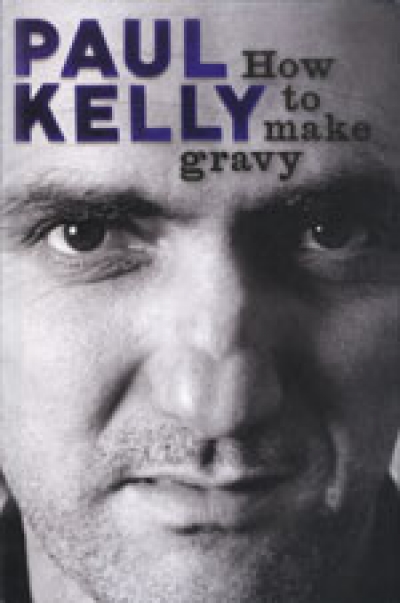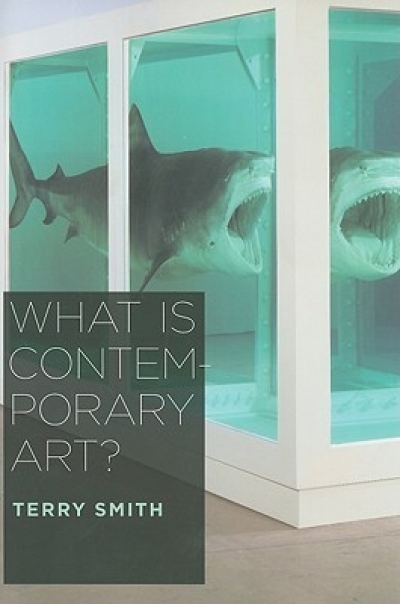Non Fiction
Merchants of Culture: he Publishing Business in the Twenty-First Century by John B. Thompson
Since well before the global financial crash of 2008, there has been pessimism about the future of the book in an age of new paradigms: electronic transmission and gadgetry, all thus far untested, in a screen culture age. This uncertainty still hovers, like a pungent doom-cloud, despite the furious conversion of new and backlist files into multiple formats in publishing houses everywhere in readiness for the e-revolution. This is expensive and time-consuming work, done in good faith as an investment for the future. One by-product has been a chilling realisation that file archiving is poorly managed by many houses and that finding print-ready files of backlist books to convert to e-format isn’t as easy as was anticipated.
... (read more)In his ‘mongrel memoir’, How to Make Gravy, singer–songwriter Paul Kelly describes the ‘pretendies’ that can ambush a musician on stage: ‘One minute you’re putting a song over to the crowd, totally inside what you’re doing, everything meshing, then suddenly you’re adrift, floating above yourself and wondering what on earth you’re doing there.’
... (read more)Imagine a bookshop or library whose contents were shelved in a cross-generic way to include a section for Anthologies: this surely would be the largest division, encompassing all of the subsections of literature, science, music, philosophy ... The anthology (‘gathering of flowers’), with its impeccable classical pedigree, is the most comprehensive kind of book, catering in the contemporary reading economy to every conceivable market, from astral travelling, through gay fiction, ghost stories, long/short/tall stories, poetry of all persuasions, to travel in Turkey and Great Zoos of the World. There is a burgeoning publishers’ trade for the literary anthology – a ‘safe’ book, the serious reader’s stocking-filler, something with at least a few contributions calculated to entertain or edify.
... (read more)At the beginning of his new book, Terry Smith writes that one of the fundamental qualities ‘of the contemporary: [is] its contemporaneousness’. He writes of the contemporary, contemporaries, contemporaneity, contemporaneous, noncontemporaries, cotemporality, cotemporalities, and cotemporal. It is a kind of tautological word game that goes down well in academic conferenceville, which is where some of this book first appeared. The function is to distinguish art of the last two decades, called ‘contemporary’, as distinct from that of earlier periods, labelled ‘postmodern’ and ‘modern’.
... (read more)Talking Theatre: Interviews with Theatre People by Richard Eyre
One of many dangers lying in wait for the writer (and reader) of theatre-insider books is that he or she may slip into an endless series of tired anecdotes linked by preening paragraphs of luvvie-speak – though most readers may find luvvie-speak rather more interesting, and amusing, than the piles of polly-waffle foisted on us by our elected ex-representatives. In his preface to this collection of conversations (they are described as ‘interviews’, but this is no rag-bag of formulaic questions), by turns urbane and provocative, humorous and perceptive, and always engaging, director Richard Eyre (whose production of Mary Poppins is currently filling Her Majesty’s in Melbourne) acknowledges his editor and publisher’s help in ‘[discriminating] between what is interesting to me and what is interesting to the general reader’. Over 331 pages and forty-two interviews, Eyre manages this balancing act with the skill of a practised performer combined with the (always) essential awareness of the audience.
... (read more)Colonial Voices: A Cultural History of English in Australia 1840—1940 by Joy Damousi
This is a book about the role of English speech in the creation and spread of British colonialism in Australia, about the eventual disintegration of this imperial speech and its values in the colony now transformed into a nation, and about the emergence of the ‘colonial voices’ of the title ...
... (read more)Goodbye Cinema, Hello Cinephilia: Film Culture in Transition by Jonathan Rosenbaum
As his title suggests, Jonathan Rosenbaum tackles two subjects in his latest collection of essays, neither of them easy to define. In an era when films are mostly viewed at home, not on the big screen, cinema can no longer mean what it once did. Cinephilia, too, is an alluring but indefinite concept – love of movies, yes, but not any old love, and probably not the devotion felt by your average fan of Transformers or Twilight.
... (read more)Man Bites Murdoch: Four Decades in Print, Six Days in Court by Bruce Guthrie
Get in line, Bruce. The world is full of those who have been done over by Rupert Murdoch. In the immortal words of George Cukor to an aggrieved actor: ‘Will you stop about being fired. Everybody’s been fired.’ So what makes Bruce Guthrie, sacked as Editor-in-Chief of the Herald Sun ...
... (read more)Immediately after the mid-term elections in November, Barack Obama left for a long-planned G20 gathering in Seoul and for meetings with heads of government in the nation states of India, Indonesia, and Japan. Nothing remarkable, you think? Exactly what one expects a United States president to do? Not in America.
The right-wing blogosphere went berserk. Miche ...
John Howard and Tony Blair both came to the prime ministership in landslides, Howard in 1996, Blair in 1997. They were on opposite sides of the traditional political divide, Howard leading a Liberal Party opposed to Australian Labor and Blair leading the British Labour Party ...
... (read more)






